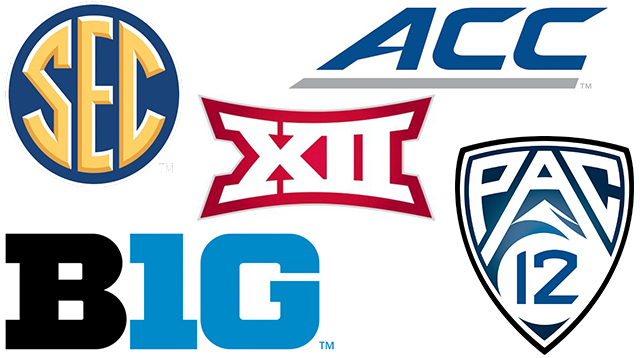 by Dave Best – Galin Education College Counselor
by Dave Best – Galin Education College Counselor
Follow the money. College sports is big business. Actually it’s huge these days generating more than $8 billion in revenues annually. However the richest athletic departments bring in about 75% of that total. Those schools are members of the Power Five conferences.
Big-time college athletic programs are now earning almost $200 million a year. Where is the money coming from? According to Forbes, a few of these huge revenue streams include football playoff and bowl payouts, NCAA basketball tournament prize money, and media rights deals. TV revenues include both rights fees and, for the conferences with network ownership stakes, estimated profit shares. Some of the smaller revenue streams include licensing and conference tournaments.
Even with these huge revenue streams, many of these major programs are still losing money on sports. According to the Washington Post, athletic directors at money-losing departments defend their spending as essential to keeping pace with competition. Their programs benefit universities in ways that don’t show on athletics financial statements, they said, like media exposure that can cause increased applicants and help fundraising.
Unfortunately many of these sports-revenue-rich schools, including public universities, charge students fees to support athletics. Some coaches are the highest paid public employees in their states. ESPN described how the richest schools have spent aggressively: on private jets, on campus perks like barber shops and bowling alleys, on biometric gadgets for athletes, and on five-star hotel stays during travel. They’ve also hired a plethora of athletic department support staffers who earn six-figure salaries and sometimes have obscure job titles such as “horticulturalist” and “museum curator.”
What about Division I schools outside the Power Five conferences? The next group of schools is termed the Group of Five. These “mid-major” conferences are the AAC, Conference USA, MAC, Mountain West and Sun Belt.
Here is a brief snapshot of the Power Five Conferences:
The Atlantic Coast Conference (ACC) brings together 15 top colleges in the Northeast and Southeast. Members are Boston College, Clemson, Duke, Florida State, Georgia Institute of Technology, North Carolina State, Syracuse, Miami, North Carolina-Chapel Hill, Notre Dame, Pittsburgh, Virginia, Virginia Tech and Wake Forest. Note Notre Dame plays as an Independent in football.
The Big Ten conference hosts many of the top schools in the Midwest and through expansion added several from the Northeast bringing the school count to 14. Members are Illinois, Indiana, Iowa, Maryland, Michigan, Michigan State, Minnesota, Nebraska, Northwestern, Ohio State, Penn State, Purdue, Rutgers and Wisconsin.
The Big 12 is comprised of ten full time member schools and 10 associate members mainly in the Southwest, with expansion bringing in a few in the Midwest and South. Member schools are Baylor, Iowa State, Kansas State, Oklahoma State, Texas Christian, Texas Tech, Kansas, Oklahoma, Texas-Austin and West Virginia.
The PAC 12 brings together 12 top colleges in the Pacific and Mountain region of the US. Members are Arizona, Arizona State, Cal Berkeley, UCLA, Colorado-Boulder, Oregon, Oregon State, USC, Stanford, Utah, Washington and Washington State.
The Southeastern Conference (SEC) is concentrated in the Southeastern US with expansion bringing in colleges in the Southwest and Midwest. Members are Alabama, Arkansas, Auburn, Florida, Georgia, Kentucky, Louisiana State, Mississippi State, Mississippi, Missouri, South Carolina, Tennessee, Texas A&M and Vanderbilt.





